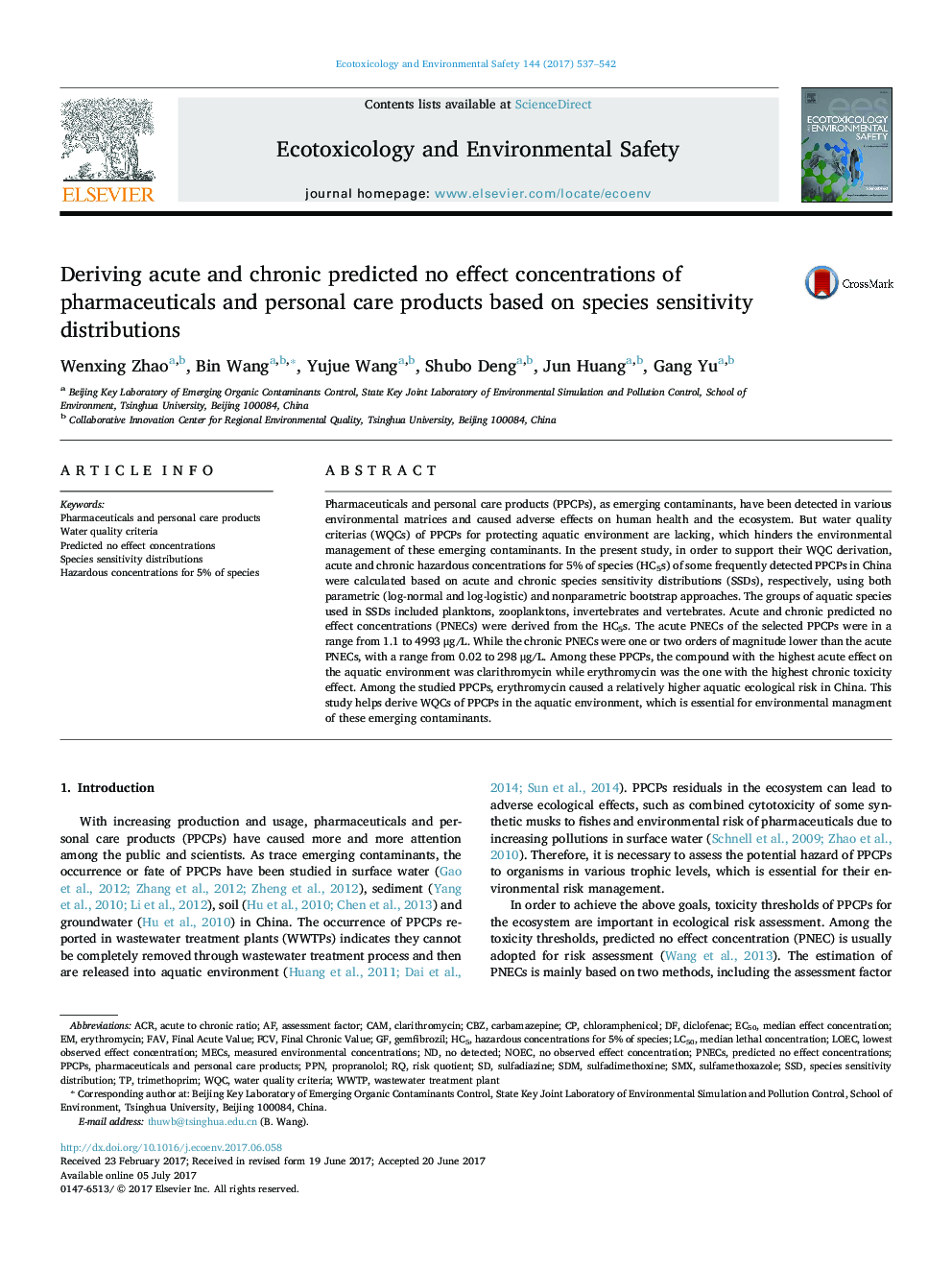| کد مقاله | کد نشریه | سال انتشار | مقاله انگلیسی | نسخه تمام متن |
|---|---|---|---|---|
| 5747499 | 1618920 | 2017 | 6 صفحه PDF | دانلود رایگان |
- WQCs are necessary for sound environmental management of PPCPs.
- The PNECs of 11 PPCPs were derived by the acute and chronic SSD-based HC5s.
- Both acute and chronic SSDs were developed by five statistical approaches.
- CAM and EM posed the highest acute and chronic effect, respectively.
- Erythromycin caused a relatively higher aquatic ecological risk in China.
Pharmaceuticals and personal care products (PPCPs), as emerging contaminants, have been detected in various environmental matrices and caused adverse effects on human health and the ecosystem. But water quality criterias (WQCs) of PPCPs for protecting aquatic environment are lacking, which hinders the environmental management of these emerging contaminants. In the present study, in order to support their WQC derivation, acute and chronic hazardous concentrations for 5% of species (HC5s) of some frequently detected PPCPs in China were calculated based on acute and chronic species sensitivity distributions (SSDs), respectively, using both parametric (log-normal and log-logistic) and nonparametric bootstrap approaches. The groups of aquatic species used in SSDs included planktons, zooplanktons, invertebrates and vertebrates. Acute and chronic predicted no effect concentrations (PNECs) were derived from the HC5s. The acute PNECs of the selected PPCPs were in a range from 1.1 to 4993 μg/L. While the chronic PNECs were one or two orders of magnitude lower than the acute PNECs, with a range from 0.02 to 298 μg/L. Among these PPCPs, the compound with the highest acute effect on the aquatic environment was clarithromycin while erythromycin was the one with the highest chronic toxicity effect. Among the studied PPCPs, erythromycin caused a relatively higher aquatic ecological risk in China. This study helps derive WQCs of PPCPs in the aquatic environment, which is essential for environmental managment of these emerging contaminants.
Journal: Ecotoxicology and Environmental Safety - Volume 144, October 2017, Pages 537-542
